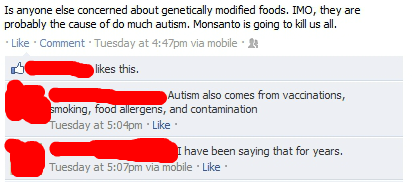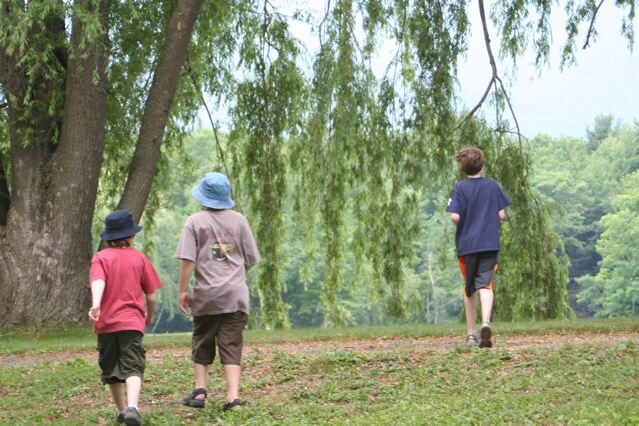Emily Willingham www.emilywillinghamphd.com When news broke that the autism spectrum categories of Asperger’s disorder and Pervasive Developmental Disorder-Not Otherwise Specified (PDD-NOS) would get subsumed into the wider maw of a general “autism disorder,” people worried. They worried about autistic people who are quite verbal or who have typical cognitive skills. What would happen to individuals whose autism doesn’t manifest in those terms as profound? The biggest concern was a new category for the Diagnostic and Statistical Manual of Mental Disorders (DSM)-5, social communication disorder. Would people like my son, diagnosed with Asperger’s and whose autism includes echolalia, anxiety, motor deficits, repetitive behaviors, learning differences, and other features well beyond the social, get rolled into what looks like a flimsy, catchall not-safety net of “social communication disorders”? And what other kind of communication is there if not social? Based on early reports, the concerns were legit. One alarming presentation at a…
Tag: PDD-NOS
Zoe Gross illusionofcompetence.blogspot.com There’s a new girl in the office and her brain is weird. One of the labels my weird brain has acquired is Pervasive Developmental Disorder Not Otherwise Specified — PDD-NOS, for short. This is an outdated term for autism, but I still harbor fondness for it because it includes the word “pervasive.” My disability is indeed pervasive, affecting all areas of my daily life — including my work life, and including [my current] internship. Being Autistic changes the way I interact with the professional world, in ways that have been — until now — Not Otherwise Specified. I actually really like working in a formal setting. I like my Senate staff ID badge. I like suits and pleats and zippers. I like taking the metro to work, I like leather shoes, I like taking my belt off and before I go through the metal detector and putting…
Jessica Severson theseversons.net Part one surveys the first part of the sequence of events by which research turns into pseudoscience, and “truth fades away in favor of headlines and pageviews and gossip.” Onward. Part Five: News Articles This is a process. First research, then op-ed, then press release and finally news articles. So what’s the headline of our news article? Top 10 Chemicals Most Likely to Cause Autism and Learning Disabilities. Guilty of serious fear mongering, no? A more accurate title may be: Researchers propose list of chemicals potentially tied to neurological development for further study. But I doubt anyone’s going to write that. The article itself, to be fair, is full of caveats. The reasons for the increase in autism are “controversial.” There is a “gap in the science.” But then you get a sentence like this: But clearly, there is more to the story than simply genetics, as…
Jessica Severson theseversons.net I am putting my foot down. As the parent of an autistic child I hear a lot about vaccines and about half a million other things that people think cause autism. I’m hyperaware of the attention autism gets in the media. So I know about the CDC’s new stats on autism rates. I know about the debate on whether the increase in autism is due to more awareness and diagnosis or more actual occurrences. (Personally, I find the former to be a serious factor, though who’s to say how much.) And I see all the articles that come out week after week about the millions of things that are linked to autism. There’s a recurring problem here. Valuable research is done. Research is disseminated. Information is reported. Articles are read. Findings are spread. And what starts in a lab ends up in a Facebook status. What starts…
Susan Senator www.susansenator.com In 1993 when Nat was first diagnosed with Pervasive Developmental Disorder, (PDD) under the “Autism Umbrella,” I asked the doctor what do you do about that, what is the treatment? “Education,” he replied. He went on to tell me that no one really knew which approach was best, and that there were many schools of thought. “It is up to you to observe and figure out what works for Nat. When something is right for him, you’ll know,” he continued enigmatically. But I envisioned Nat at school — though back then I could barely picture that, he seemed so little and vulnerable — and this advice seemed wrong. He needed me, not school, I remember feeling. He would be bewildered by school. Lost. But the doctor was saying that he should actually be in school for as many hours as possible. (No one said “at least 30-40…
T.C. www.ihavethings.blogspot.com I vacillate on the autism thing, and how it applies to N. I use it around the school, because it is a strap, a grabbing-on point, a way for people to understand my son and–very much more to the point–to justify putting forth time, effort, and especially money to help him. I use it because doctors and therapists have used it to describe him. I use it because it’s the primary disability listed on his IEP. But there are so many ways in which he doesn’t seem, to me, to fit on the spectrum part of the spectrum. I describe him, often, as the triangular peg who not only doesn’t fit in the round hole, but doesn’t look all that much like the square peg, either. And yet. And yet, professionals of all stripes see him on a regular basis, and talk to me about him with concern…
Kristen Spina kristenspina.wordpress.com I’ve spent the first few days of Autism Awareness month blogging about nothing important. I should say, deliberately blogging about nothing important. The problem I’m having is that with all this focused attention, all eyes on us, so to speak, I’m having a hard time putting words to what I feel, what I think about autism in our lives. One of the things I know is that I can’t speak for anyone other than myself. I can’t speak for my son, for my husband, for our families or friends, or for any of you who walk a similar path. As I read other blogs and listen to some of what the media is saying, I am overwhelmed by the diversity of thought and opinion. The polar extremes of the spectrum itself. I am reminded that the inherent challenges of autism have to do with perception — from…
Elise, A.K.A. aspergers2mom asd2mom.blogspot.com Fifteen years ago, my oldest son was diagnosed with PDD-NOS (Pervasive Developmental Disorder, Not Otherwise Specified). At the time, we had no idea what kind of future he would have — if he would have at a future at all. Autism was not even a word on anyone’s lips at the time; no one was talking about it and no one was even acknowledging the epidemic that it was becoming. Luckily, I had a cousin whose son had been diagnosed years earlier and I called him for some advice. The best thing that he ever said to me and what I pass on to others is: Do not project the future for your child. Take each day, each moment if necessary, and do what needs to be done at that time. Then one day you will look back and see how far your child has come.…
Frances Vega-Costas www.viviendoenotradimension.com dimensionautismo.blogspot.com Autism is a very complicated disorder and not only affects each individual differently, it strikes anywhere in the world. Never in my life would I imagine that I would be a special education advocate nor that would I use the “A” word almost on a daily basis. Almost ten years ago the “A” word moved into my house and it has been a very interesting relationship with its ups and downs but as any regular couple we learned to live with each other in peace, accepting each other as we are. My son was diagnosed almost at four with PDD-NOS, which by that time I did have an understanding of, and to be honest for me is a fancy label for “we don’t know in what part of the ASD Spectrum your son is”. Since he was 18 months we began to see that something was…
Kristen Spina http://kristenspina.wordpress.com/ I hang back, following but not too closely, watching my son and his two best friends through the viewfinder, my face hidden behind the awkwardness of a zoom lens. As I watch the boys cross the red wood bridge, I snap half a dozen photos. And then again, as they settle in on the dock, taking turns casting, tossing pieces of bread to a giant turtle bobbing on the lake’s surface. There is little to show here for my son’s differences. He is simply one of the guys, enjoying a bit of freedom and fun on a weekend in the Catskills. I scan the lake and the mountains beyond, the grey clouds sitting low in the sky, and think about how remarkable the scene really is — how its very ordinariness is something to celebrate. I take a few more pictures, then leave the boys to their…


